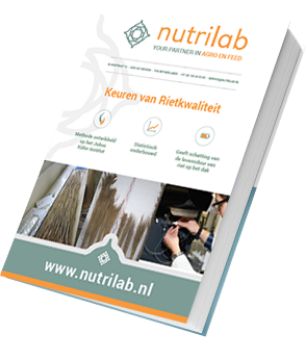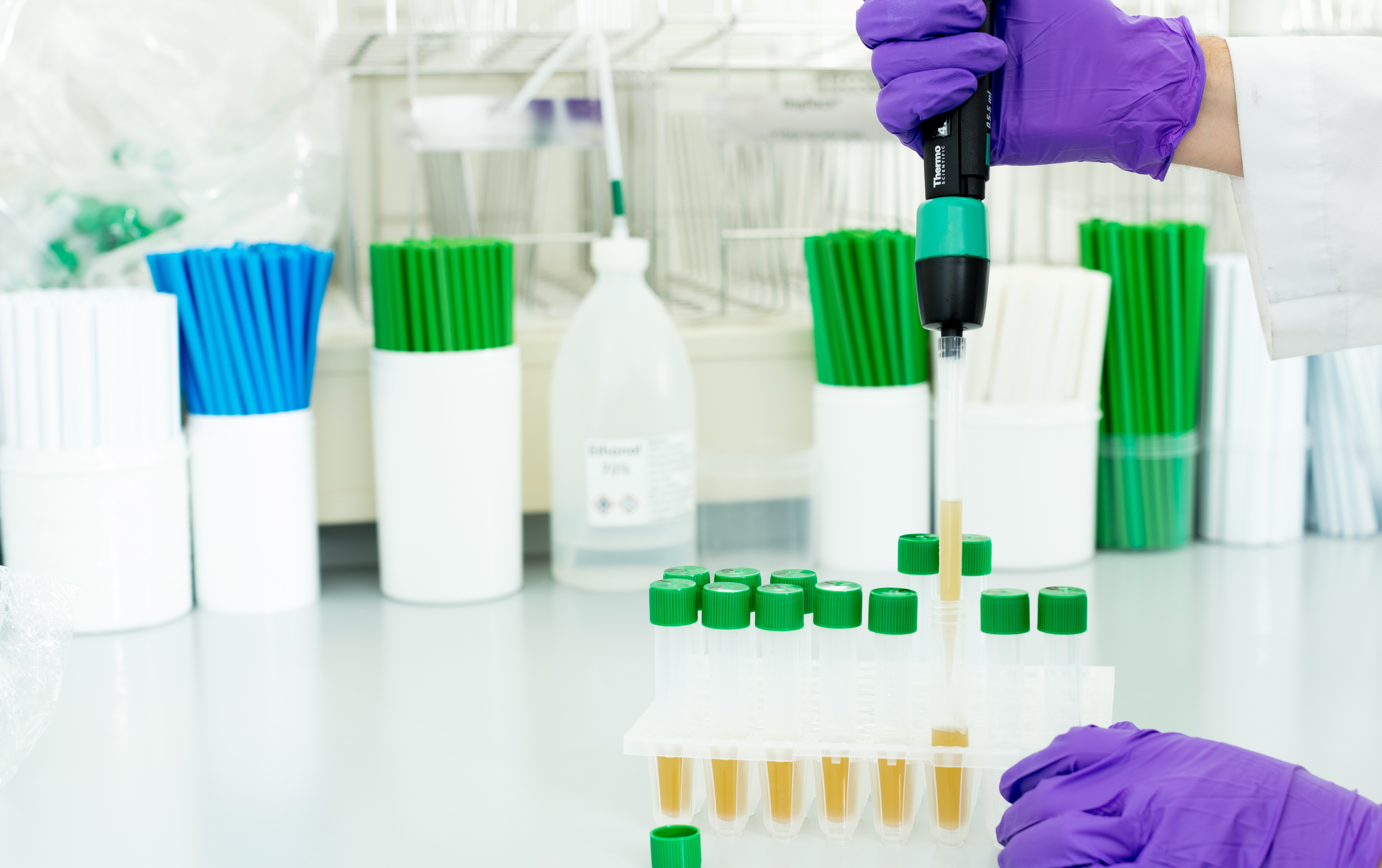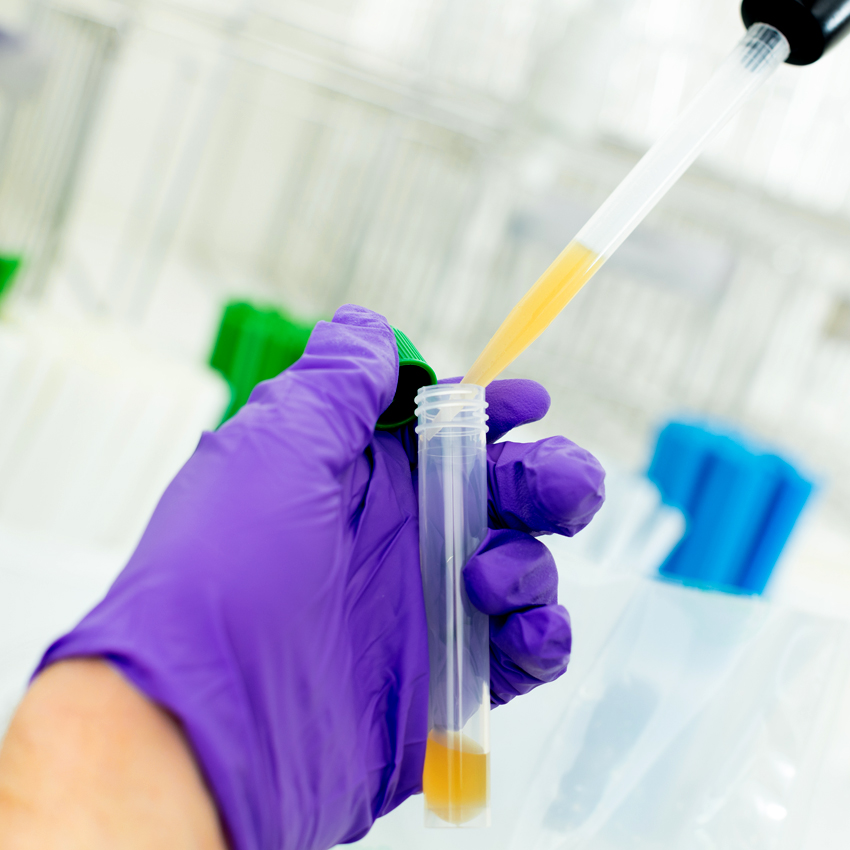
Would you like to be kept informed of developments?
In our free white paper, we share information about the new rules of legislation, innovations in analysis and we tell you about the digitisation of the market. Download our white paper for free!
 Analysis Selector
Analysis Selector
Listeria monocytogenes can be present at many locations in the production environment and in raw materials. Even if Listeria monocytogenes has never been found in the production environment, it should never be assumed that contamination is impossible. Bacteria are even present in meat substitutes, which are deep-fried before being packaged in a modified atmosphere (MAP). This illustrates the need to carry out studies on baked goods, such as sausage rolls, where the meat sticks out of the sides of the dough or an apple pie where the pastry latticing doesn’t completely cover the apple filling. In these products, the core temperature during baking is sufficiently high to kill any Listeria monocytogenes bacteria present in the food. Any contamination that might take place would be on the surface. Could this surface become a breeding ground for Listeria?

Ready-made refrigerated food products should be tested to establish whether they are a potential breeding ground for Listeria monocytogenes or not. The producer needs to be able to guarantee, by means of a study, that the limit of 100 cfu/gram will not be exceeded at the end of the product’s shelf life. The setup of such an examination must follow the guidelines of NVWA food safety information sheet 85, which interprets the regulations set in EG 2073/2005. The decision tree displayed on page 20 of food safety information sheet 85 helps to determine whether a food product is at potential risk of contamination. pH and water activity (Aw) analyses are a prerequisite for establishing this risk.
If the pH and Aw values indicate that the growth of Listeria in a product may be a possibility, a solid argument for the shelf life of the product is required. Predictive models such as ComBase and FSSP are useful aids for realising this. FSSP is the most commonly used model because it is more comprehensive than ComBase. It includes all the main factors which may inhibit the growth of Listeria, such as pH, nitrite levels, phenols from smoke, water phase salt content and organic acids. Nutrilab can analyse all these components with methods that fit the FSSP-model. One example is phenol analysis.
Smoking products, such as fish and meat products, inhibits the growth of Listeria. Phenols are responsible for this. A phenol concentration of 15 ppm (mg/kg) can double the product shelf life. Various laboratories today use different methods to determine the phenol levels in a product. The outcomes vary significantly. Nutrilab carries out analyses according to the method from Cardinal et al. that is also used by the developers of the FSSP model, a group led by Professor Paw Dalgaard.
Organic acids such as acetic acid, lactic acid and citric acid are highly effective in inhibiting the growth of LMO on the condition that the pH of the product is low enough to reach the minimal inhibitory concentration (MIC) for protonated acids.
Nutrilab has extensive experience with modelling using FSSP. We also carry out challenge tests where we test the growth potential of Listeria in the field.


We will be happy to visit you to discuss any quality questions or issues you may have.
Plan an advisory meeting
In our free white paper, we share information about the new rules of legislation, innovations in analysis and we tell you about the digitisation of the market. Download our white paper for free!


Powered by Wallbrink Crossmedia